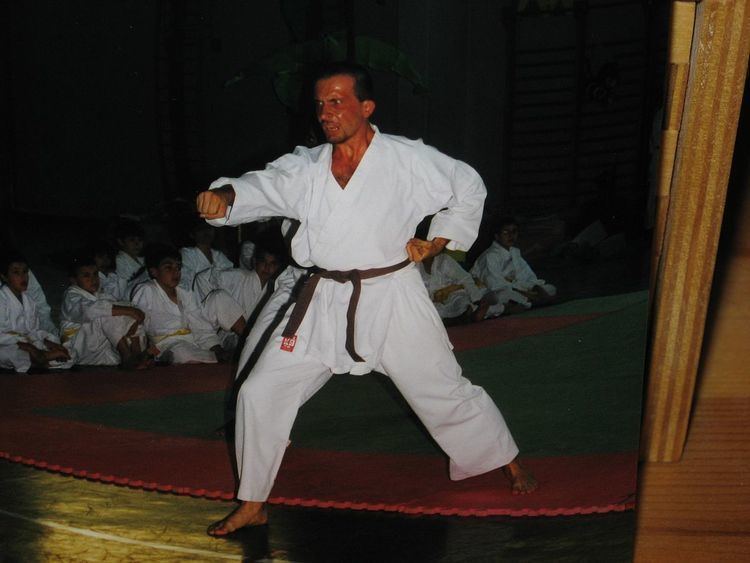Hangul 기합 Revised Romanization gihap Kanji 気合 | Hanja 氣合 McCune–Reischauer k'ihap Hiragana きあい | |
 | ||
Kiai (気合) /ˈkiː.aɪ/ is a Japanese term used in martial arts for the short yell or shout uttered when performing an attacking move.
Traditional Japanese Dojo generally use single syllables beginning with a vowel. The concept has become a notable part of Asian martial arts in popular culture, especially in martial arts films, in writing rendered in variants such as Hi-yah!, Aiyah!, Eeee-yah!, or Hyah!.
The term is a compound of ki (気) meaning energy or mood, a(u)(合), an emphatic marker. The same concept is known as K'ihap in many Korean martial arts, such as taekwondo, hap being the, based on the Korean reading of the same characters; its Hangul spelling is 기합.
In the board game Go the term describes fighting spirit.
Use in martial arts
Students of Japanese martial arts such as aikido, karate, kobudo, kendo, or judo (or related arts such as taiko drumming) use kiai to startle an opponent, intimidate, express confidence, or express victory. In kendo, for example, a point is only given by the Shinpan (referees) if the hit is accompanied by a strong, convincing kiai. The physical aspects of a kiai are often thought to teach a student proper breathing technique when executing an attack which is a common trait adopted by many other foreign martial arts and combat sports.
This is especially useful for longer series of attacks such as kirikaeshi, Kakari geiko (rapid partner exercise creating openings) and uchikomi geiko (responding fast to openings made by the partner).
Mental imagery techniques are used to teach the martial artist to imagine starting a kiai in the hara or dantian; from a physiological perspective, this means the yell should start in the diaphragm, not the throat.
